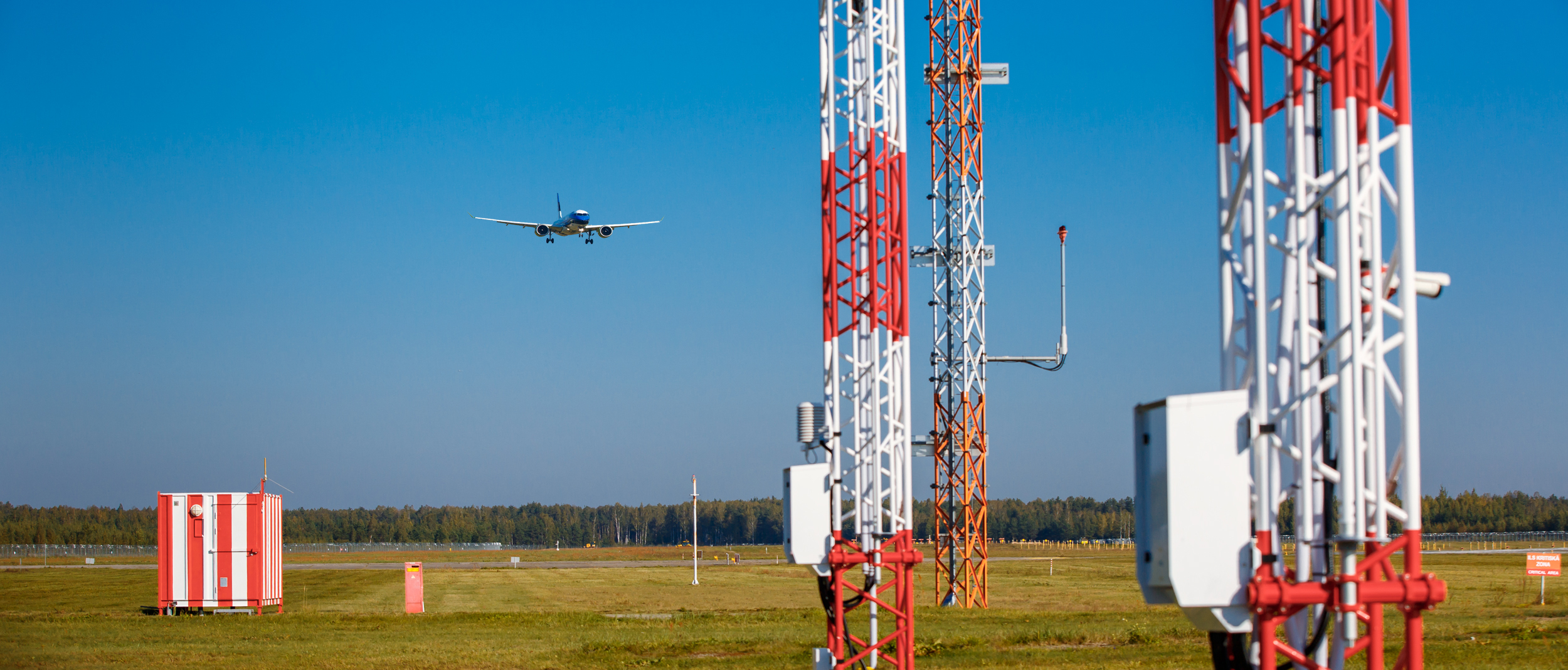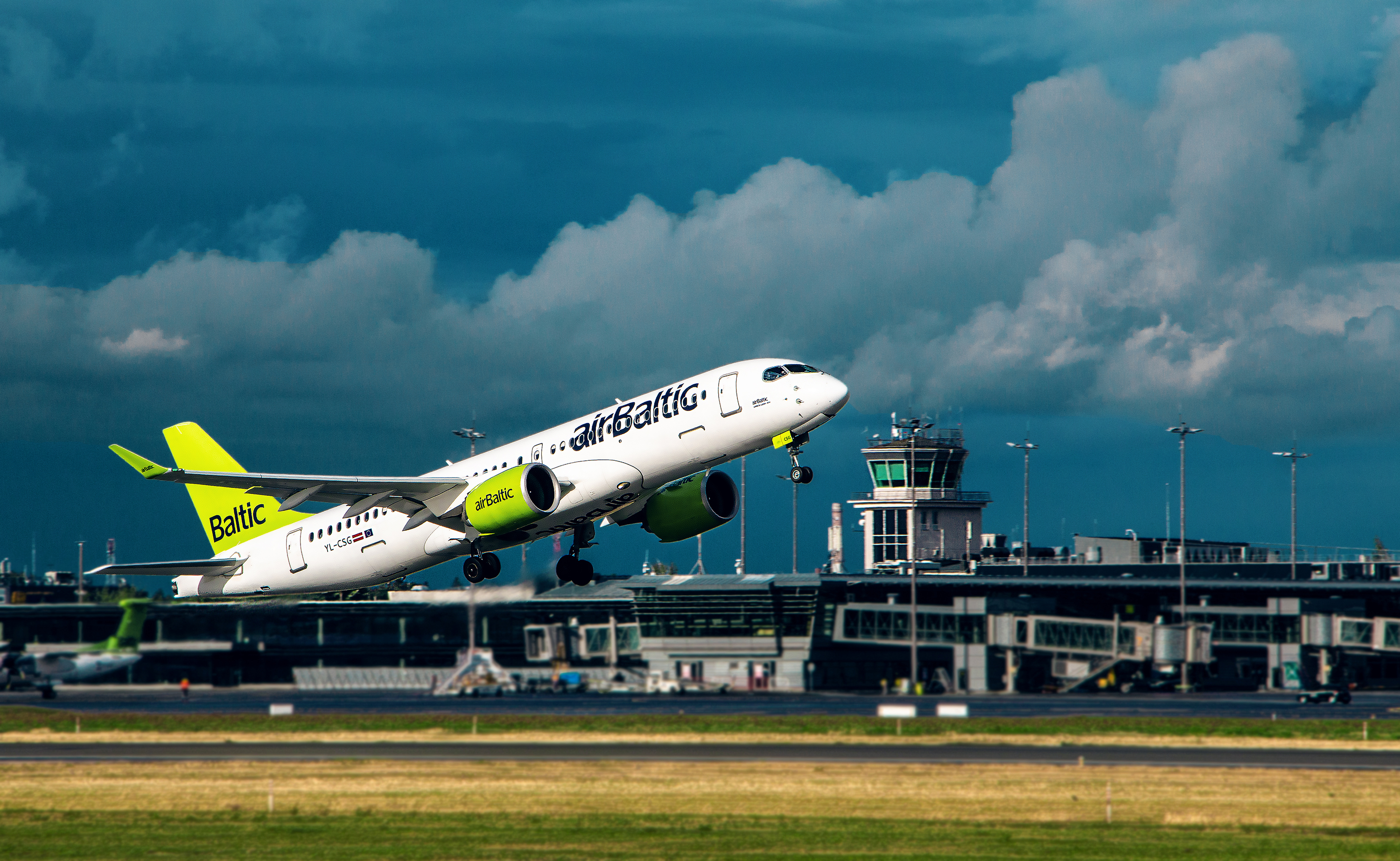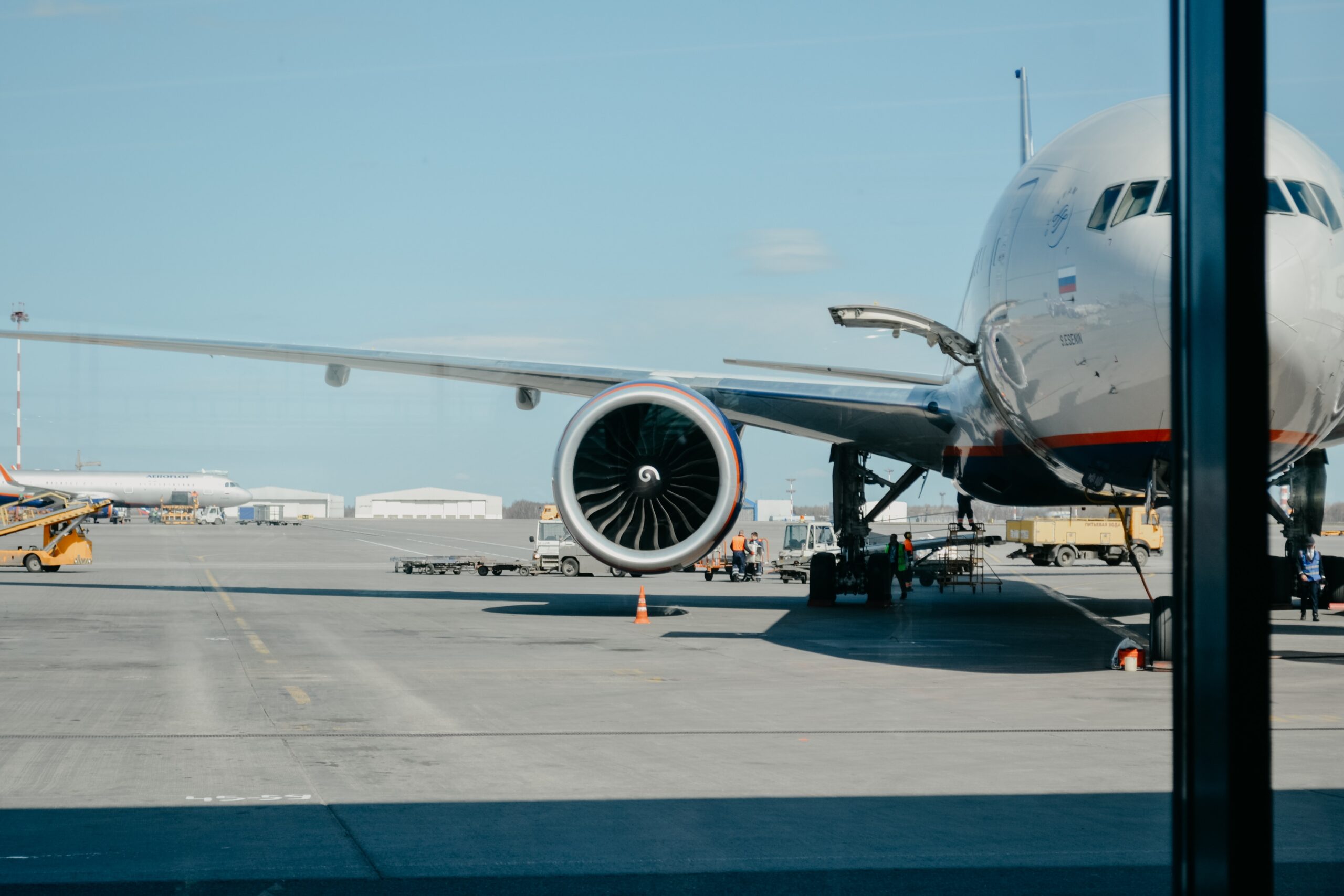LGS personāla atlases procesā veic personas datu apstrādi, lai novērtētu pretendenta atbilstību ieņemt kādu no LGS darba vakancēm. Datu apstrādes tiesiskais pamats ir LGS leģitīmā interese iegūt vakancei atbilstošāko kandidātu, kā arī amata pretendentu sniegtā piekrišana sniegt savus datus dalībai pretendentu atlasē. Pretendentu sniegtie personas dati tiek apstrādāti tikai saskaņā ar noteikto mērķi (datu apstrādes mērķis darba sludinājumā var tikt precizēts)…
Author: admin
ATS/CNS/MET
ATS
State joint stock company “Latvijas gaisa satiksme” provides air traffic control services and information in the air space of the Republic of Latvia and in part of the air space over the international waters of the Baltic Sea (within the Riga Flight Information Region). For this purpose, the Riga Air Traffic Control Centre has been established and equipped with state-of-the-art air navigation equipment (radar, surveillance, communication and navigation equipment). The Riga ATC centre is comprised of four sectors providing air traffic control services for transit flights, as well as aircraft arriving and departing from the Riga and Liepāja airports. Air traffic control towers are located at both the Riga and Liepāja airports in order to provide information for aircraft during take-off and landing.
Communication, navigation and surveillance (CNS) services
The facilities of state joint stock company “Latvijas gaisa satiksme” are equipped with state-of-the-art air navigation systems and equipment to provide air traffic services to air space users in the Riga Flight Information Region (Riga FIR). The systems and equipment comply with ICAO standards, EC and EUROCONTROL requirements, and are operated by highly qualified technical staff (ATSEP).
Communication
LGS provides air-to-ground mobile voice and data communication and ground-to-ground fixed and mobile voice and data communication.
The purpose of the mobile air-to-ground voice communication system is to provide two-way voice communication between air traffic controllers and pilots. To this end, LGS has created a mobile aviation communication network ensuring optimum radio coverage throughout the control sectors.
The purpose of the mobile ground-to-ground voice communication system is to provide two-way voice communication between the ATC tower and ground services working within the areas covered by the air traffic controllers.
LGS provides two types of mobile air-to-ground data communication services: CPDLC – a data link between air traffic controllers and pilots, and FANS data link communications (D-ATIS, D-VOLMET – digital broadcasting of meteorological information and DCL – ATCO coordination with aircraft on the ground).
The purpose of the fixed ground-to-ground voice communication system is to provide two-way communication between ATCOs of adjacent ATC centres. To this end, LGS uses a SCHMID ICS200/60 digital voice communication system, which is linked with the voice communication systems of adjacent ATC centres.
LGS provides two types of ground-to-ground data communication services using the Aeronautical Fixed Telecommunication Network (AFTN) for exchanging specialised information (such as flight plans, meteorological information, ATC coordination messages, etc.) and the On-Line Data Interchange (OLDI) protocol for ATC data coordination and handover/takeover of aircraft crossing the Latvian airspace border.
Navigation
Navigation services within the Latvian airspace are provided with the help of DVOR/DME, VOR/DME, DME radio beacons, an instrument landing system ILS/DME and GNSS.
Currently two DVOR/DME radio beacons (in Riga and Liepāja), four VOR/DME radio beacons (in Ventspils, Trakši, Daugavpils and Smārde), and three DME radio beacons (in Jaunsvirlauka, Raiskums and Rudbārži) are being used for route navigation.
The DVOR/DME beacons in Riga and Liepāja ensure, inter alia, the free route airspace concept within the Latvian airspace. The DVOR/DME beacon in Riga and three DME beacons (in Jaunsvirlauka, Raiskums and Rudbārži) provide standard instrument arrival and departure routes in the Riga TMA, and the Riga and Liepāja DVOR/DME beacons are used for non – precision approaches and missed approaches at the airfields in Riga and Liepāja.
Instrument landing systems have been set up in two landing directions (ILS/DME CAT II) at Riga Airport and one landing direction (ILS/DME CAT I) at Liepāja Airport.
GPS and EGNOS services provide instrument RNP and RNP AR approaches at Riga and Liepāja airports.
All ground-based navigation and landing systems are equipped with remote monitoring and control mechanisms. GPS and EGNOS data recording tools are located at Riga and Liepāja aerodromes.
Surveillance
In order to implement surveillance and air traffic control functions in the Riga Flight Information Region (FIR), LGS has established duplicated secondary surveillance radar coverage based on secondary radar data from:
· three Mode S secondary surveillance radars (RSM970S);
· the MSS-W RIX territory surveillance system (WAMRIX);
· three adjacent radars – Martna (Estonia), Palanga and Vilnius (Lithuania).
The Riga primary surveillance radar provides single primary surveillance coverage in the controlled airspace of the Riga terminal control area (Riga TMA).
The secondary surveillance (Mode S) radars in Riga, Ērgļi and Cīrava together with the MSS-W RIX wide area multilateration (WAM) surveillance system provide duplicated secondary surveillance coverage in the controlled airspace of the Riga TMA and Riga FIR.
For improved accessibility of the secondary data from LGS surveillance systems in parts of the controlled airspace of the Riga FIR, radar data is exchanged with neighbouring countries through cooperation with the Estonian ATC provider EANS regarding data from the Martna secondary surveillance radar and Oro Navigacija from Lithuania regarding data from the secondary surveillance radars in Palanga and Vilnius. The radar data exchange serves as a backup source of radar data, especially for times when a radar must be shut off temporarily for routine technical maintenance or repairs.
Meteorological services
Aeronautical meteorology services include performing meteorological observations and providing structural units of the LGS ATC department and users of Latvian airspace with necessary meteorological information.
The services are provided by automatic weather observing systems (AWOS) at Riga Airport (MIDAS IV), Liepāja Airport (AviMet) and Ventspils Airport (AW 11) operating non-stop. Weather observation data is broadcast to aeronautical information users 24 hours a day. Meteorological information is also available from the Briefing Department as a Pre-Flight Information Bulletin.
Current information about surface wind direction and speed, visibility, weather phenomena, air temperature, barometric pressure, cloud height and other relevant data is provided at the airfields.
Meteorological observations at Riga Airport are performed by LGS meteorological observers trained in accordance with the requirements of the World Meteorological Organisation (WMO), and the technical maintenance and service of equipment at Riga, Liepājā and Ventspils airports is provided by the electronic engineers of the Meteorological Department. Meteorological observations are also performed at Liepāja Airport and Ventspils Airport, and at Lielvārde military airfield in cooperation with the National Armed Forces.
Introduction of A-CDM at Riga International Airport
On February 16, 2016 Latvijas gaisa satiksme in collaboration with Riga International airport submitted INEA a project application for A-CDM in Riga International airport. The project is co-financed by the CEF for Transport.
The main goal of the project was to increase capacity of Riga International airport and to improve co-ordination of processes among all the parties involved in flight operations. CDM procedures will ensure more effective decision making, based on more precise and timely information exchange and common understanding of the current situation among all the involved parties.
As a result of the implementation of the project, the quality and safety of services for both airspace users and passengers was significantly improved by:
– more precisely planning the take-off time of aircraft, reducing the waiting time both at the terminal and on the runway, especially during peak hours,
– reducing resource and fuel consumption costs for airlines related to waiting time before take-off and preparing aircraft for flight,
– reducing environmental pollution (noise, CO2 and Nox).
The implementation of the project was completed on April 6, 2021, and since October 15, 2021, Riga International Airport has been a CDM procedure certified airport.
The project has been implemented with the support of the Connecting Europe Facility or CEF.

New Air Ships arrives to Riga
Consul quidam perfecto no ius. Sanctus nominati sea ut, ignota mnesarchum ut cum, eam virtute urbanitas scriptorem id. Ius justo dolor voluptua id, equidem tractatos ex qui. Te soleat altera detracto vel. Vel an corpora erroribus conceptam, vidit altera persius cu pro.
Consul quidam perfecto no ius. Sanctus nominati sea ut, ignota mnesarchum ut cum, eam virtute urbanitas scriptorem id. Ius justo dolor voluptua id, equidem tractatos ex qui. Te soleat altera detracto vel. Vel an corpora erroribus conceptam, vidit altera persius cu pro.
Vix nibh putant blandit ea, philosophia signiferumque mea ex. Te sed omnes singulis, mel no malis laudem eirmod, ad ius oblique reprehendunt. An vidisse principes sit. Dolores facilisi perfecto an his. Vel at paulo detraxit. Per paulo persius an, mei simul consul ut.
Usu ei ubique ridens tacimates, cum moderatius instructior id, te mel solum mucius docendi. Te quo prima audire facilisi, vim no posse senserit. Cibo omittam ne sit, vis an solum scripserit consequuntur. Eu omittam vulputate per, nominati explicari ad eam. Per clita doctus accommodare ex.
Has tota everti iisque id. Veri partem maluisset an nec, ut mea graeci tritani. Modo veritus molestie has ei. Ex mei esse adhuc iudico, efficiendi complectitur no eum, qui id enim ocurreret suscipiantur. At vis aliquam laboramus, nostrum voluptaria vel at. Quas indoctum hendrerit nam ei, his alia ludus euismod ne. Malorum apeirian te duo, eam nonumy epicuri fierent cu.
Id mnesarchum sadipscing adversarium per, ex autem solet eleifend has, ea delenit insolens adversarium vix. Accusamus assentior eu mel, et est suas enim minimum. Ne adipisci erroribus splendide has, no cum homero animal corrumpit, partiendo honestatis eu vel. Veniam sanctus mandamus nam te. Id nisl albucius his, homero impetus delenit cum no, ea vituperata repudiandae neglegentur duo.
Ius in essent verear. Natum doming an eam. Id minim liber ius, possit aperiam ad mel. Volutpat signiferumque te eos, eu autem epicuri mei, te pri vero ignota ceteros. Ex quo ipsum graeci instructior. Ea timeam cotidieque nec, vim cu vide quaestio prodesset.
Natum quando legendos ex eum, mutat alienum albucius ei eam. His ut fabellas phaedrum, est ex error ignota dictas. Et ius enim habeo, no purto vivendum gloriatur mei. Has ea impetus oblique, conceptam pertinacia definiebas eum ea. Ius ei docendi officiis, ne integre accumsan gloriatur nam. Congue equidem vis id, ei vel phaedrum platonem.
Ei eum mutat invenire, amet populo iudicabit qui te. Noster dissentias ne nec, in integre posidonium mei. Solum deterruisset ei quo, sed quem hinc fugit te. Id inani ocurreret nam.
Est fabulas moderatius ex, inani consul conclusionemque eos ad. Noster petentium vulputate vis ad. At natum voluptua sed. Est ullum persius eu, sint eripuit no vim. Cum nisl quando melius ut, no ridens copiosae pertinax est, duo et inimicus indoctum erroribus. Adolescens interesset his an.
Per ad congue deserunt, usu aliquam epicuri fastidii eu. Nostrum vituperata ea est, vix ea nulla dicunt. Ei vel aperiam similique, nec ubique quaerendum referrentur an. Ea vim solet scribentur, no vis vero discere vulputate. Ex iusto congue pri, est id veri nominati mnesarchum. Te pri prima tamquam. Ea duo aeque solet alienum, ei ponderum forensibus persequeris his, sed primis aliquam et.
Training
Air traffic management
- Full ATCO training (ADC, ACS, APS) and FIS/AFIS Operator training;
- ATCO rating revalidation and renewal training;
- ATCO annual emergency and refresher training;
- ATCO conversion training;
- ATCO On-the-Job Training Instructor (OJTI) and Assessor (CCA) training (Initial and refresher training);
- Team Resource Management practical facilitation training (Initial and refresher training)
- Team Resource Management course (Initial and refresher training);
- Theoretical Instructor Course (Initial and refresher training).
CNS/MET
- Air traffic safety electronics personnel (ATSEP) Basic training;
- ATSEP qualification training (NAV, SUR, MET, COM, Data Processing, System Monitoring and Control, Power Supply);
- ATSEP refresher training;
- Team Resource Management;
- Theoretical Instructor Course (Initial and refresher training).
Aeronavigation Information services (AIS) and Briefing (BRF)
- AIS and Briefing personnel Basic training;
- AIS and Briefing personnel refresher training.











